Asprey
The Asprey company was originally founded as a silk printing business by William Asprey in 1781. Based from a shop in Mitcham, Surrey, William and his son Charles (I) soon started to retail luxury goods.
In 1841, Charles (I) formed a business partnership with his son-in-law, Francis Kennedy, a stationer based at 49 Bond Street, London. This partnership was to last until 1846, with Francis continuing on the business himself. By the end of 1847, Charles Asprey (I) and his son Charles (II) moved their business to 166 Bond Street, London.
Asprey entered one of their dressing cases into the Great Exhibition of 1851, receiving an ‘Honourable Mention’ for their quality of workmanship (See our page on Asprey’s ‘Great Exhibition’ Dressing Case). This prestigious event earned Asprey great admiration and recognition, concreting the Asprey name to be synonymous with the utmost luxury and exclusivity.
In 1858, Asprey absorbed the highly respected firm of Edwards into their business.
Purchasing the Alfred Club at 22 Albermarle Street in 1861, Asprey expanded their premises and now had entrances to their shop on two of the most exclusive streets in London.
Asprey were awarded the gold medal for expertise for their collection of dressing cases presented at the International Exhibition of 1862. Queen Victoria was so impressed by the work of Asprey, that in the same year she awarded them with the Royal Warrant for their dressing cases, travelling bags and writing cases.
In 1872, the business name officially changed to Charles Asprey & Son, and later in 1879, to Charles Asprey & Sons, with the inclusion of Charles (II)’s sons, Charles (III) and George Edward Asprey. (See note below)
Asprey acquired the firm of Leuchars & Son in 1888, and started to share their manufactory at 8 Sherwood Street, Golden Square, London. However the actual business of Leuchars & Son remained trading from their 38 & 39 Piccadilly, London address until 1902.
In 1889, the business was renamed C & G.E Asprey, despite Charles (II) not retiring until 1891. The last name change of the nineteenth century was in 1900, where the business became known as Asprey & Co. In 1906, Asprey bought out their business competitors, and neighbours, Houghton & Gunn.
Note:
Despite these official years of name change, pieces signed ‘Asprey & Son’ or ‘Asprey & Sons’ have appeared far earlier than these dates would suggest.
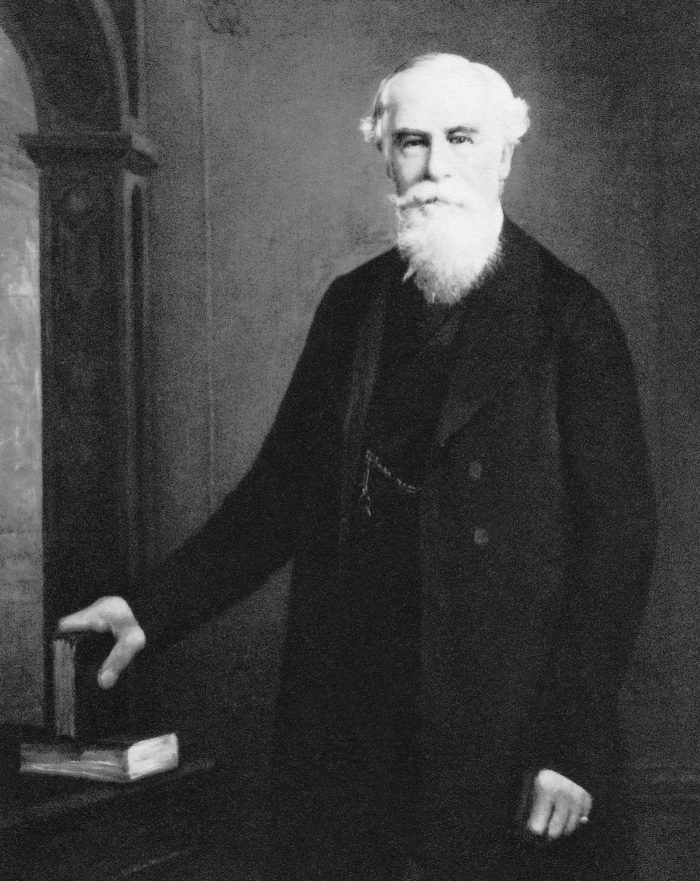
Charles Asprey (II): 1813 – 1892.
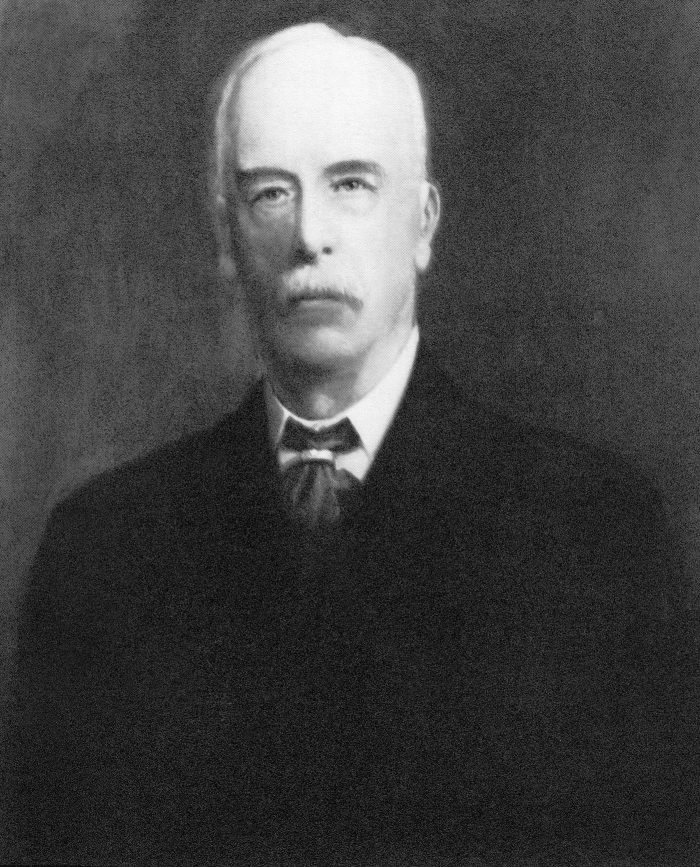
Charles Asprey (III): 1845 – 1916.

Engraved manufacturer’s plate belonging to an antique dressing case from Asprey, displayed at the Great Exhibition of 1851.
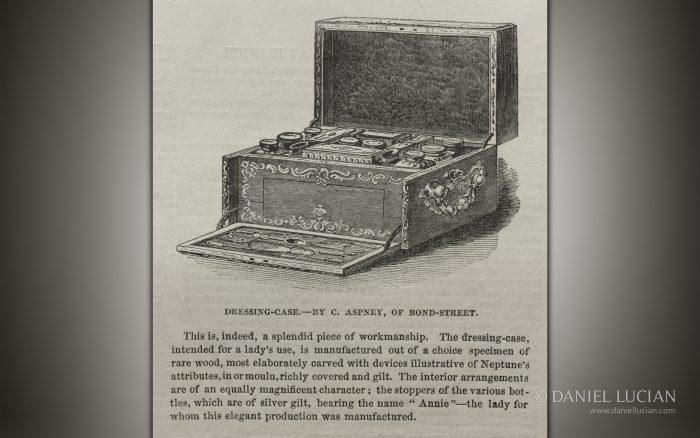
An illustration and description of Asprey’s dressing case displayed at the Great Exhibition of 1851, taken from the ‘Illustrated London News’, September 20th 1851.

Charles Asprey & Son gilt-brass manufacturer’s plate from an antique jewellery box with Betjemann Patent mechanism and candlesticks.

An Asprey engraved brass manufacturer’s plate from an antique jewellery box in calamander.

Asprey & Sons gold tooled manufacturer’s mark from an antique dressing case.
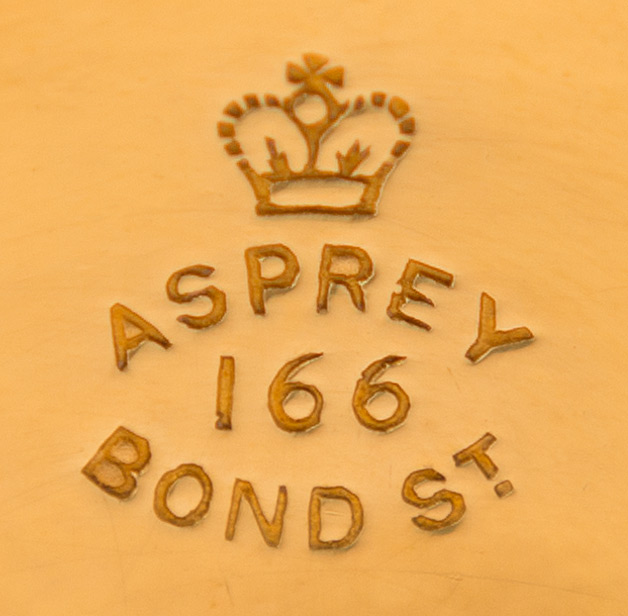
‘Asprey – 166 Bond St’ stamped into a silver-gilt dressing case fitting.

Charles Asprey & Son gilt-brass manufacturer’s plate from an antique jewellery box in coromandel with Betjemann Patent mechanism & candlesticks.
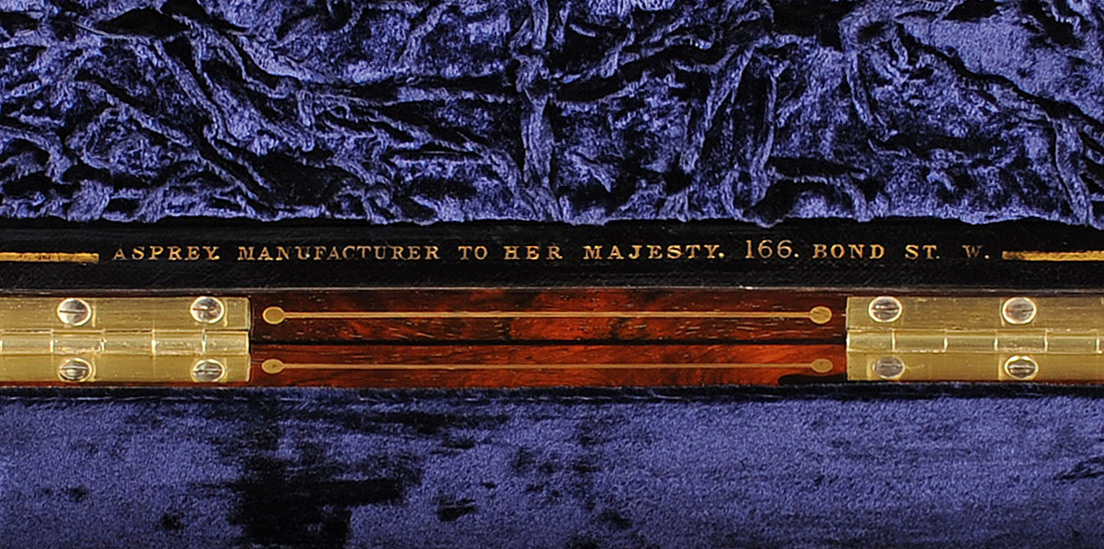
‘Asprey. Manufacturer to Her Majesty. 166 Bond St. W.’ manufacturer’s mark gold tooled into leather.

‘Asprey & Son. 166. Bond St and 22. Albemarle St’ manufacturer’s mark gold tooled into velvet.

‘Asprey – Dressing Case Manufacturer – 166. Bond Street’ gilt-brass manufacturer’s plate from an antique jewellery box in coromandel with brass inlay and secret compartments.
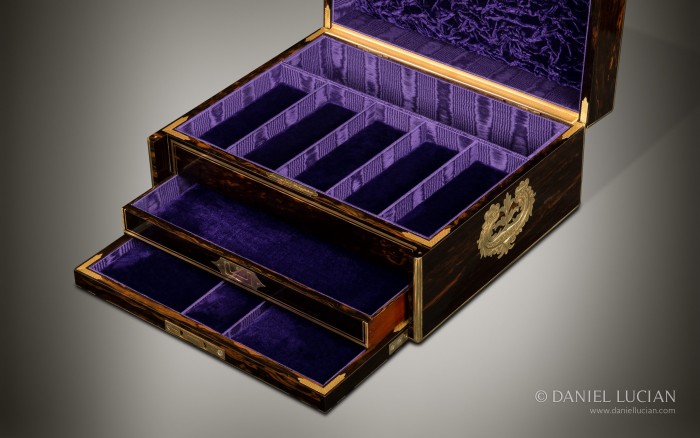
Asprey ‘Exhibition’ Piece – Antique Jewellery Box in Coromandel with Brass Inlay and Secret Compartments.

Charles Asprey engraved brass manufacturer’s plate.

‘Asprey – 166 Bond St’ stamped onto a Bramah lock plate.
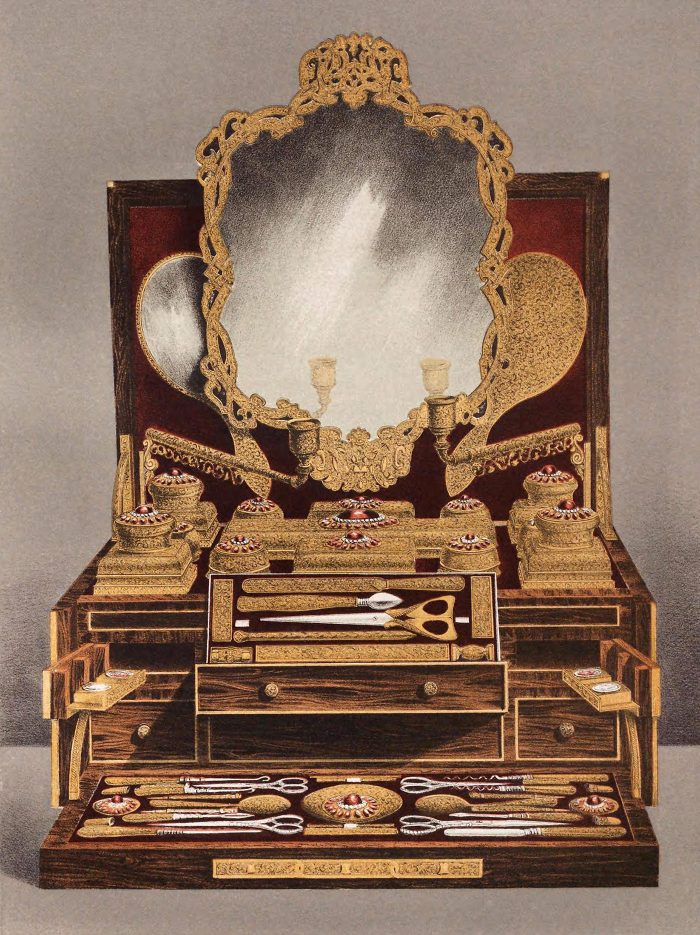
Asprey dressing case exhibited at the International Exhibition of 1862.
The lithograph above and the following description are taken from ‘Masterpieces of Industrial Art & Sculpture at the International Exhibition, 1862’ by J.B Waring.
‘Mr. Asprey, who received prize-medals at the London Exhibition of 1851, and at that of Paris, 1855, for his productions, obtained also, in 1862, a medal for the general excellence of his manufactures. We have selected as his chef-d’oeuvre a lady’s dressing-case, of Coromandel or Bengal wood, inlaid and mounted externally with brass, and lined internally with rich ruby velvet. The various toilette fittings are of cut crystal glass, with silver-gilt tops, the centre of each being enriched with a carbuncle surrounded with pearls, consisting in all of 872 stones; the large mirror can be adjusted to any angle, and on each side of it are two hand-mirrors; beneath these are candle-branches so arranged as to fold up in the lid. The fall front is fitted with a call-bell, mariner’s compass, thermometer, whistle, magnifier, glove-stretcher, and in fact a list of objects which quite exhaust the requisites for the road or the boudoir. There are very ingeniously contrived drawers for jewels, bank-notes, gold, &c. &c.; besides repositories for pen, ink, and paper. By pressing a spring, a slide is formed into a writing-desk independent of all the fittings. There is, indeed, an infinity of ingenious contrivances, a multiplicity of objects, and an excellence of workmanship shown in this case, which more than sustain Mr. Asprey’s well-earned reputation. The size of the case was about 20 inches by 14 inches, and 10 inches deep; it was valued at £1500 [approximately £175,000 in today’s money].‘
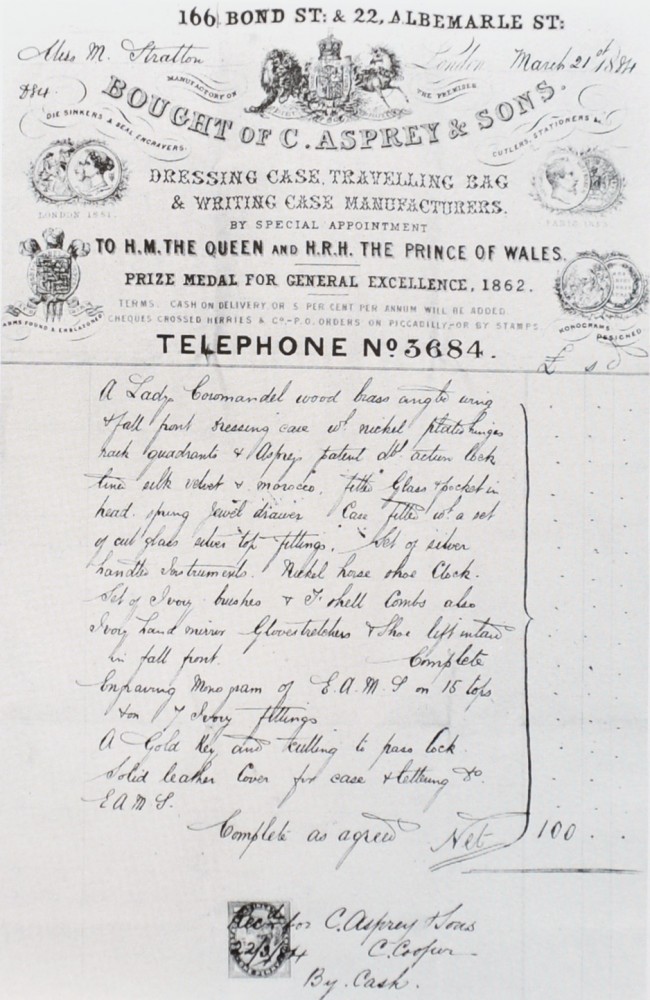
A Charles Asprey & Sons invoice for a coromandel box with ‘Angle Wing’ mechanism from 1884.
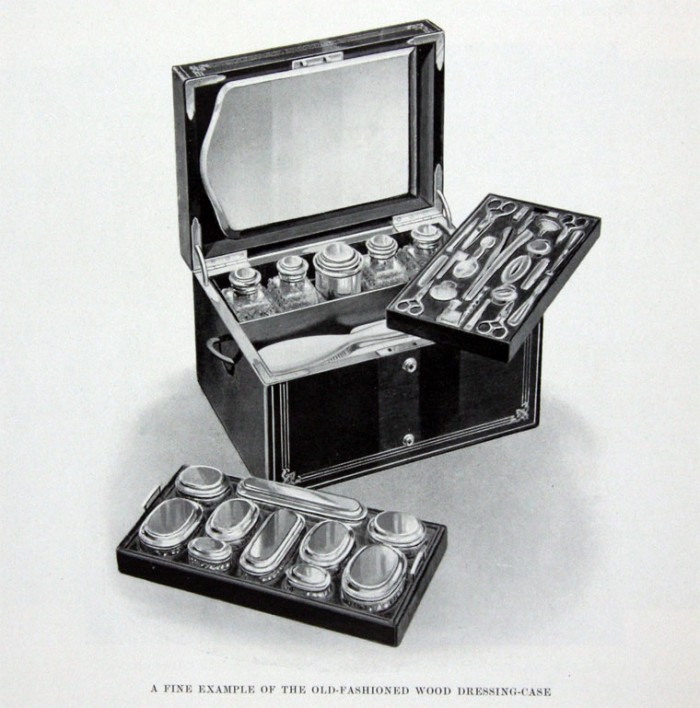
Illustration of an Asprey dressing case in ebony taken from an Asprey catalogue c.1880.
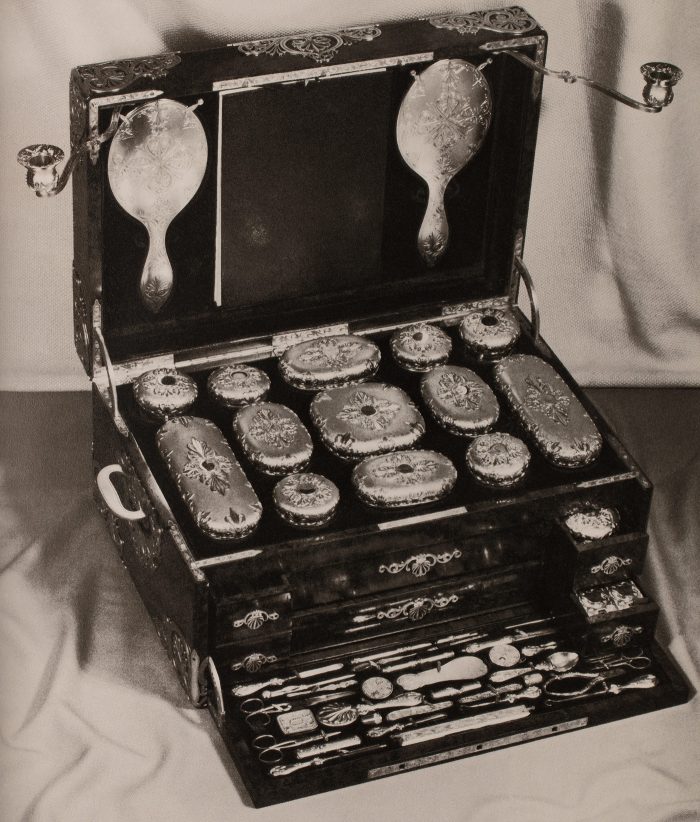
Asprey dressing case entered into the International Exhibition of 1862. This dressing case still remains in Asprey’s own archive at their Bond Street, London location.
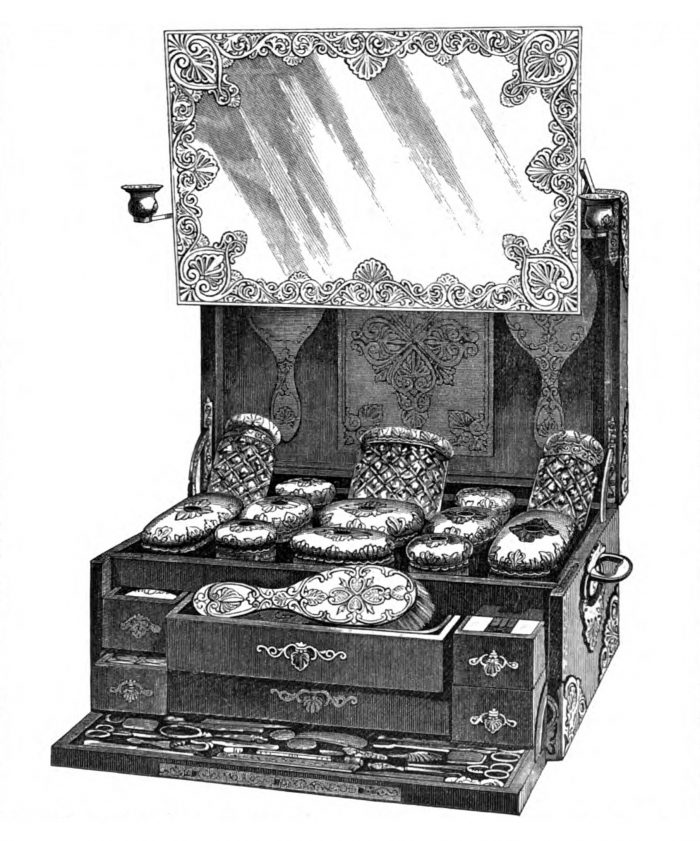
Illustration of an Asprey dressing case taken from ‘The Art Journal Illustrated Catalogue of the International Exhibition 1862’.
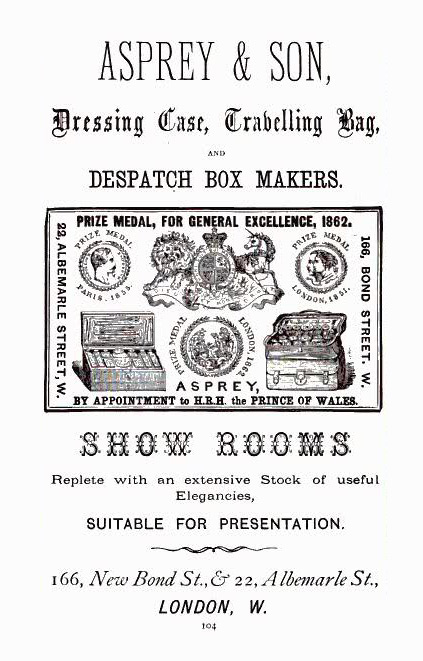
Asprey illustrated advertisement from c.1870.
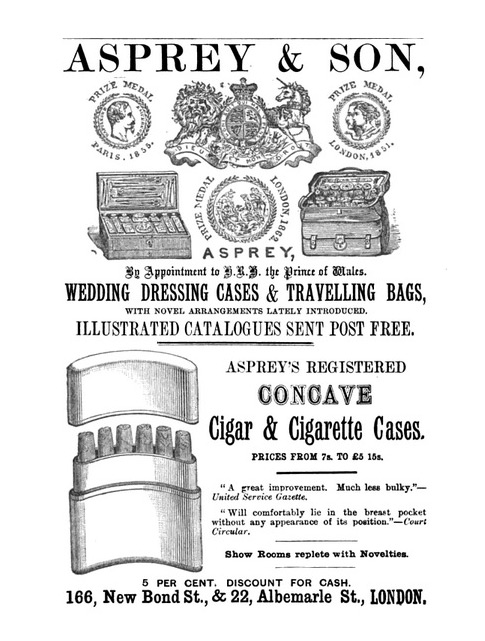
Asprey illustrated advertisement from c.1880.
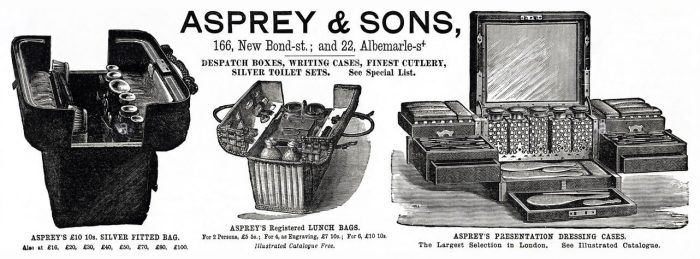
Asprey & Sons illustrated advertisement from 1887.
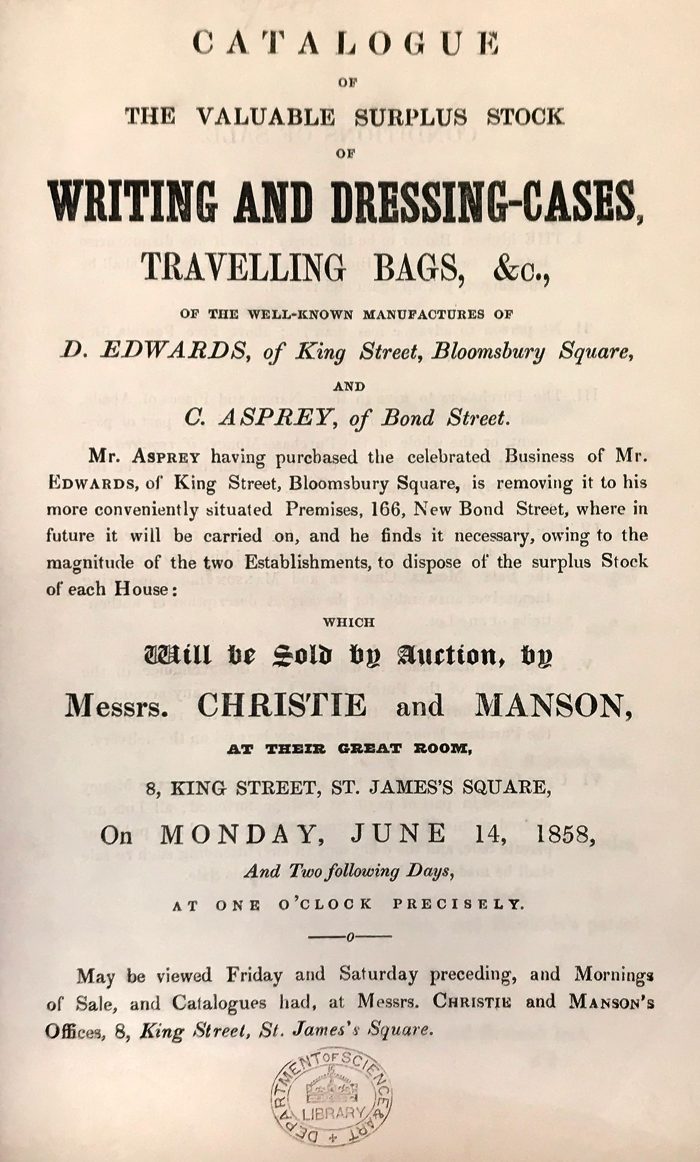
Auction catalogue for the sale of surplus Asprey and Edwards writing boxes, dressing cases and travelling bags upon the absorption of the firm of Edwards by Charles Asprey in 1858.
RELATED ARTICLES
- Asprey’s ‘Great Exhibition of 1851’ Dressing Case
- Asprey Patent Bramah Lock
- Dressing Case Bottles and Jars
- Dressing Case Tools and Accessories
- Edwards
- Houghton & Gunn
- Leuchars
- Betjemann Patent Mechanisms
- George Betjemann & Sons
- Index of British Makers and Retailers
- Index of Silversmiths
- Index of Locksmiths
- Coromandel
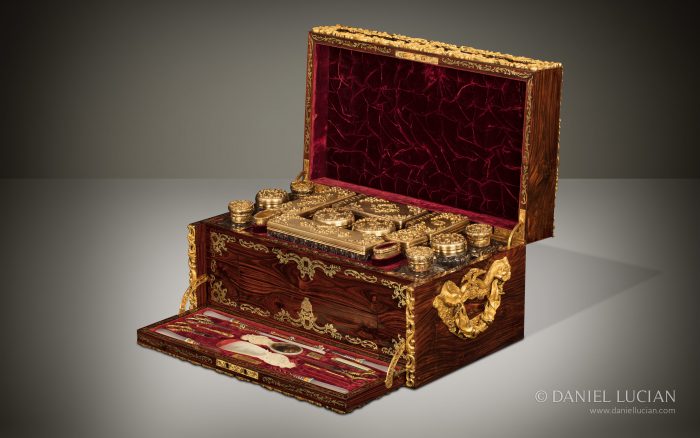
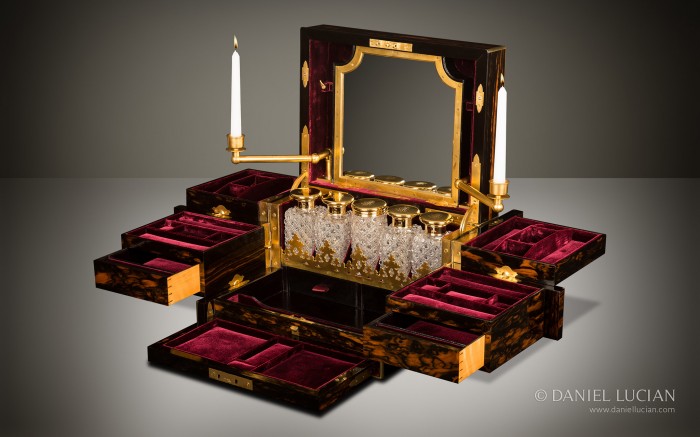
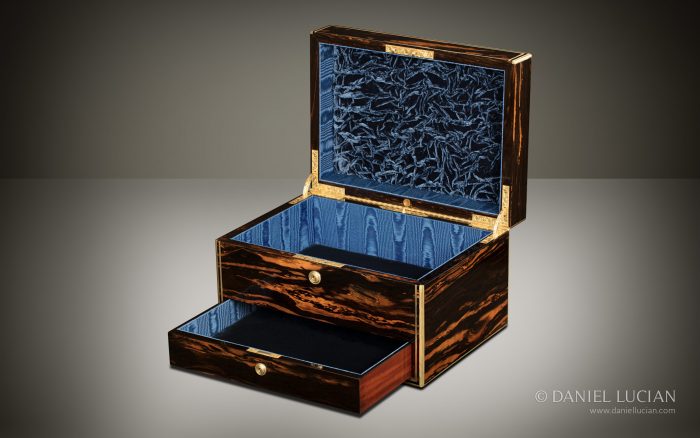
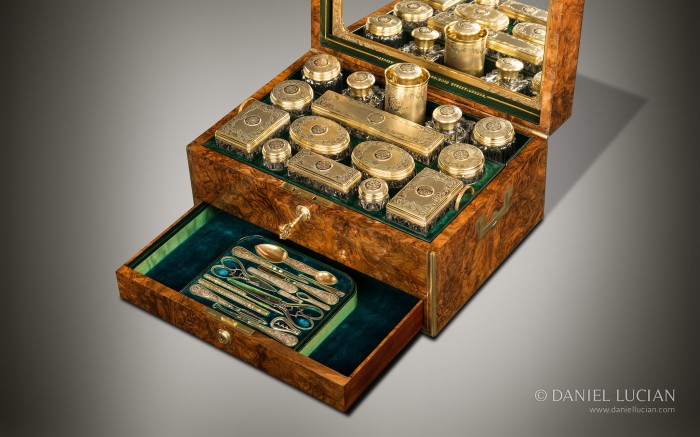
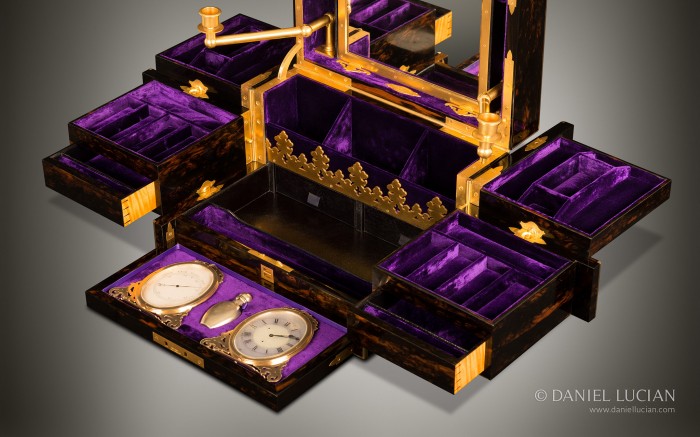
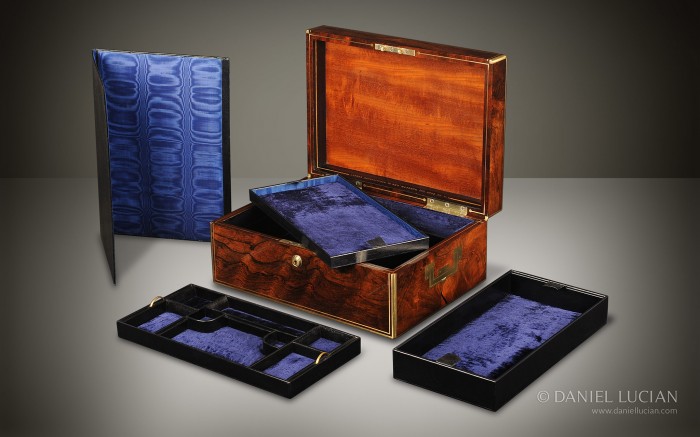
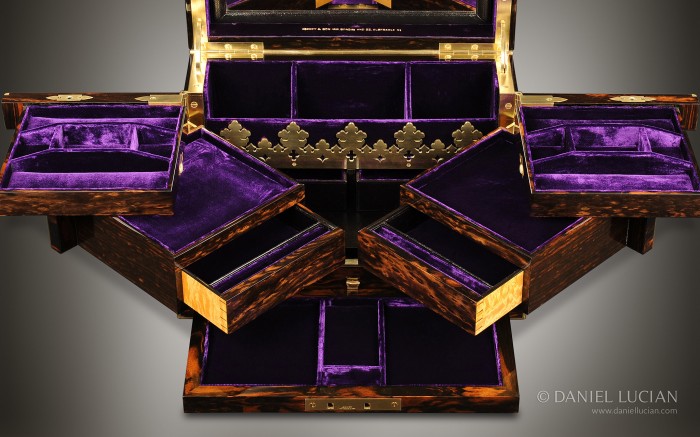
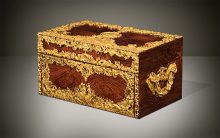 Price On Application
Price On Application